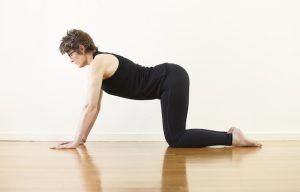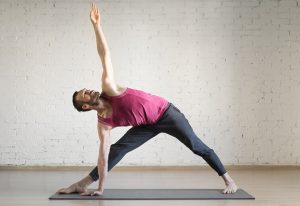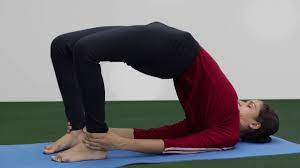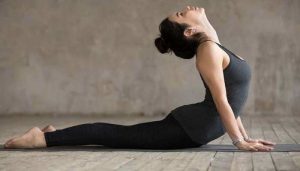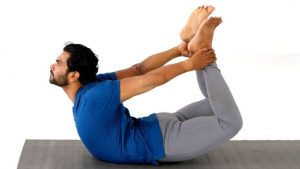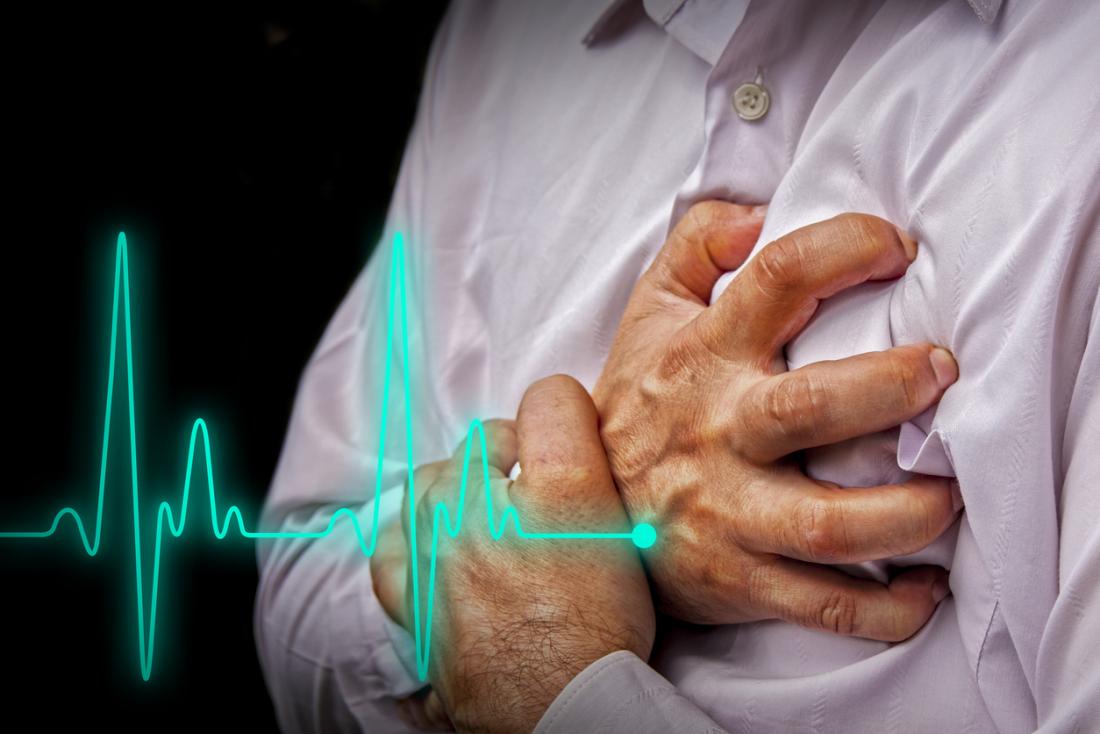
YOGA FOR HEART BLOCKAGE
- January 19, 2023
- Posted by Dr. Vaidya Karanvir Singh
- 0 Comment(s)
Table of Contents
INTRODUCTION
Heart blockage is one of the most common problems in today’s era. It is caused by the deposition of cholesterol, calcium, etc. in the arteries of heart. Arteries of heart are called coronary arteries. These blood vessels are responsible for supply of oxygen and nutrients to the heart muscle. When cholesterol deposits inside the wall of arteries, plaques are formed. These plaques further cause inflammation of the arteries.
Blockage in heart is a long term process. It develops over years. The symptoms go unnoticed until the heart blockage is significant. Pain in chest and difficulty in breathing are the most common symptoms of heart blockage. If not treated at time, it can lead to heart attack. However, it can be prevented by following healthy dietary and lifestyle practices.
WHAT ARE THE CAUSES OF BLOCKAGE OF HEART?
Atherosclerosis is the main cause of heart blockage. It is the hardening and stiffness of blood vessels due to deposition of fats, cholesterol and calcium, etc, on the inner walls of arteries. The buildup is known as plaque. This leads to narrowing of blood vessels and ultimately blockage. The plaque sometimes burst leading to formation of clot. It can damage the arteries and limits the blood flow to the part supplied by it. When the heart muscle will not get enough oxygen and nutrients, it does not work properly. This leads to myocardial ischemia.
RISK FACTORS OF HEART BLOCKAGE
Here are some of the factors which make a person more prone to heart blockage:
- Increasing age, especially above 45 years
- Having a genetic predisposition to coronary heart disease
- Lack of physical exercise
- Sedentary lifestyle
- Diet rich in fats and carbohydrates
- High blood pressure
- Intake of tobacco
- Increased levels of triglycerides in blood
- High levels of bad cholesterol
- Cigarette smoking
- Increased body weight
- Chronic kidney disease
- Diabetes
- Metabolic syndrome
- Sleep apnea
- Menopause in early stage
- Suffering from AIDS
- Autoimmune disorders like rheumatoid arthritis, systemic lupus erythematosus, etc
- Endometriosis
- Excessive stress
- Alcohol intake
WHAT ARE THE SYMPTOMS OF HEART BLOCKAGE?
In the early stages, the symptoms of blockage in heart are not noticed as it takes a long time to develop. As the coronary arteries get narrower with time, the symptoms become more severe and prominent.
Following are the common signs and symptoms of blockage in heart:
- Pain in chest which starts in the middle or left side of the chest and radiates towards the left side of arm
- Shortness of breath
- Feeling tired
- Slow or irregular heart beat
- Palpitations
- Dizziness
- Difficulty in breathing
- Fainting
- Nausea
- Vomiting
- Indigestion
- Insomnia
- Heart attack
HOW HEART BLOCKAGE CAN BE PREVENTED?
Heart blockage can be prevented by some of the dietary and lifestyle changes. Following are the steps taken for prevention:
- Doing regular exercise
- Managing high blood pressure
- Avoid smoking
- Maintaining optimum weight
- Taking a low-salt and low fat diet
- Intakes of fruits
- Managing stress
- Getting proper sleep
- Say no to alcohol
HOW YOGA CAN BE HELPFUL IN MANAGEMENT OF HEART BLOCKAGE?
Due to unhealthy lifestyle and bad eating habits, heart problems have become very common. Obesity and sedentary lifestyle are the most common causes of fat accumulation inside the walls of arteries. In yoga, there are different types of body postures which help in removal of toxins from the body, managing weight and have a good effect on heart and respiratory system.
Following are the yoga asanas which are very beneficial in treating heart blockage:
MARJARIASANA
Marjari means cat and asana means body posture. Marjariasana is called cat stretch. It is an excellent stretching posture.
How to do it:
- Come onto the fours- arms and legs, with back forming the top of the table.
- Arms should be perpendicular to the floor and knees are hip-width apart from each other.
- While inhaling, raise the chin and bend the head backwards. Push the navel downwards and raise tailbone.
- This is the cat pose. Hold it for 1-2 minutes and take deep breathes.
- Then exhale and release the pose gradually.
- Do the pose for 4-5 times.
Contraindications:
- Neck injury
- Back injury
TRIKONASANA
Trikonasana is called triangle pose also. It leads to stretching of legs and torso. It opens up chest space and promotes effect of deep breathing.
How to do it:
- Stand with the feet wide apart. Then stretch the right foot outwards while keeping the leg closer to the torso.
- Keep the feet firmly on the ground and balance the weight equally on both the feet. Then bend the right arm and touch the ground. Meanwhile, the left arm goes up.
- The waist should be kept straight. The body should bend sideways and not forwards and backwards.
- Repeat the same procedure on the other side also.
Contraindications:
- Neck pain
- Headache
- Insomnia
- Pregnancy
- Diarrhea
SETU BANDHASANA
How to do it:
- Lie on the back on the floor
- Press onto the feet and slightly lift the hips upwards. You can slide a yoga block under them for giving support.
- During relaxing, remove the yoga block and bring the legs and hips down on the floor.
Contraindications:
- Pregnancy
- Neck injury
- Stomach ulcers
- Hernia
BHUJANGASANA
Bhujanga means cobra and asana means body posture. Bhujangasana is the cobra or snake pose. It can be done easily at home while lying down on the stomach and then stretching. It gives a good stretch to the body and instantly relieves stress.
How to do it:
- Lie down in stomach with the toes flat and soles facing upwards.
- Rest the forehead on the ground, keep the legs closer with feet and heels touching each other.
- Now slowly lift the body while taking a deep breath in. The navel should be kept in ground level.
- Both the hands should have equal pressure while pulling on and off of the torso from the ground.
- Hold the pose for 4-5 breaths. Then, breathe out and bring the abdomen, chest and head gently on floor.
- Repeat it for 4-5 times.
Contraindications:
- Pregnancy
- Carpal tunnel syndrome
- Hernia
- Recent abdominal surgery
- Fracture of ribs or wrist joints
DHANURASANA
Dhanu means bow and asana means body posture. In dhanurasana, the shape of the body is made like that of a bow. The pose should be performed 4-5 hour after meals. The best time is of early morning.
How to do it:
- Lie in the stomach with the feet apart.
- Then fold the knees and take your hands backwards and hold the ankles.
- Breathe in and lift the chest up from the ground. Pull the legs upwards and more towards the back.
- Keep the body posture stable and see forward. Pay attention to the breath.
- Maintain posture for 15-20 seconds and bring the legs and chest gently to the ground.
Contraindications:
- Neck injury
- Hernia
- Hypertension or hypotension
- Lower back pain
- Migraine
- Recent abdominal surgery

Dr. Vaidya Karanvir Singh is the younger Vaidya in Chandigarh Ayurved & Panchakarma Centre. He is the fourth generation in his family who is practicing as a general consultant in Ayurved & Panchakarma treatment at Chandigarh. In his practice, he had treated more than 1 Lakh Plus patients worldwide.


